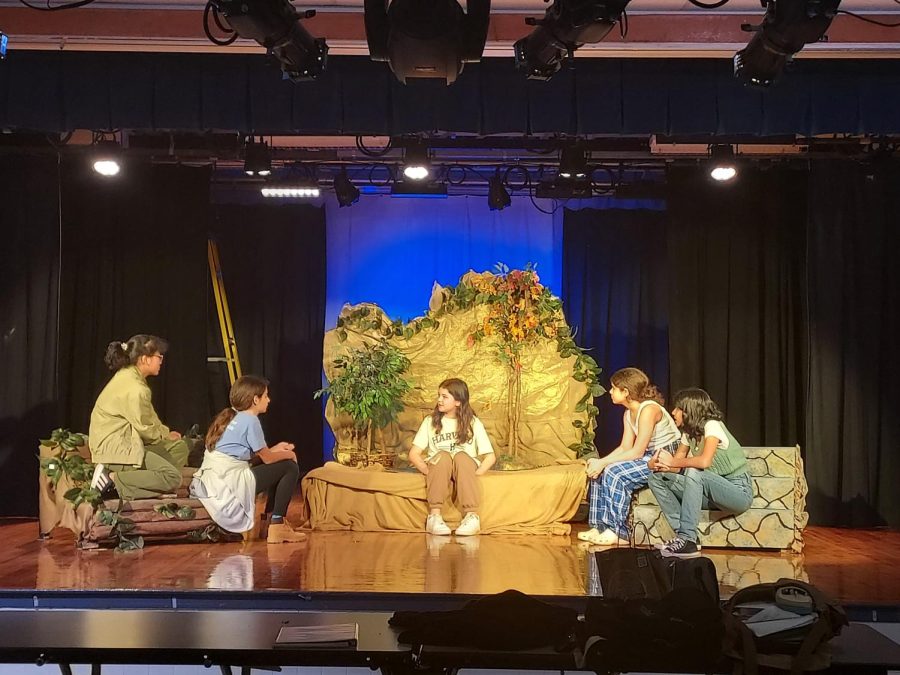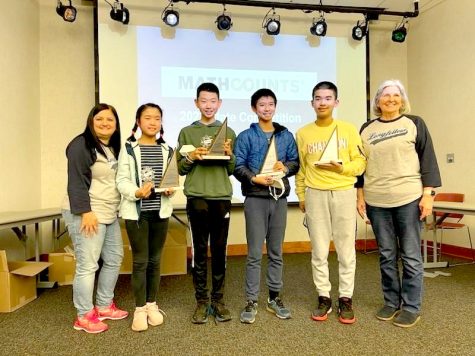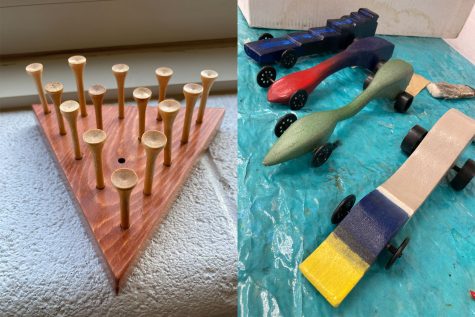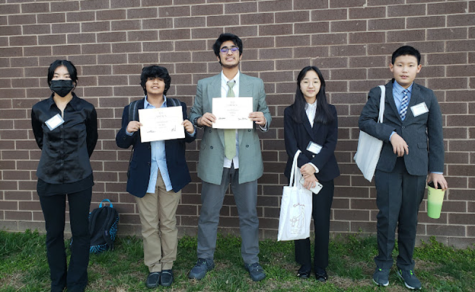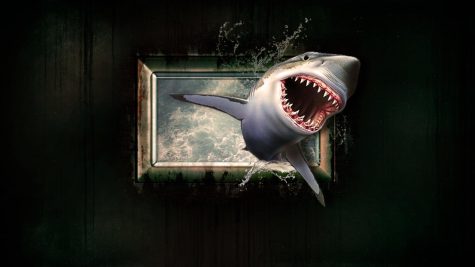Take An Adventure to Neverland
Sets take shape as the cast of Peter Pan rehearse their performances.
Drama students were excited to go out for this year’s fall play, Peter Pan, a classic fantasy story with swashbuckling pirates, damsels in distress, deadly poison, and a quest for a mother.
“I just love the story of Peter Pan, even though some of the themes are a little old fashioned, we’ll say,” said Director and theater teacher Sarah Barry. “I just like the magical feeling, the whole Neverland idea; it’s very whimsical and innocent and sweet.”
Barry has been looking for a modernized version of Peter Pan for some time now due to sensitivity issues with the original version.
“I was all hung up about the whole Native American narrative,” said Barry. “The story was written a long time ago, and it’s very culturally insensitive the way that they portray the characters,” Barry said.
J.M. Barrie, according to the Smithsonian Magazine, referred to the tribe in the play by offensive terms that were used as a blanket stand-in for all native populations. The dialogue for the tribe was in pidgin (shortened sentences), with Tiger Lily speaking slightly better English but still being nowhere near correct. One of the key moments in the play was the beating of a tom-tom.
Barry hoped there might be a version without the offending material, so she kept looking. She was rewarded this summer with a perfect version of Peter Pan for Longfellow.
“It has Wendy going to Neverland. She doesn’t have any brothers, but she meets Peter Pan and Tinkerbell and Captain Hook and the Lost Boys and the pirates and everything, but they just cut out that one section.”
With fewer characters, there are fewer parts. As a result, Barry decided to double-cast the show. While Barry and both casts were working out their performances, the tech theater class, with Patricia Talmadge, worked on creative solutions to repurpose old set materials and create Neverland. Some of their solutions included old skateboards, boats from Oaktown high school, and bleachers.
“We create the life of the play—the world of the play,” explained Talmadge. “Where Ms. Barry is concerned about the actors, we are concerned with everything else. The lights, the set, the sound, the costumes, the props, [and] publicity. So we do the world of the play.”
This is a middle school play with a limited budget, and drama students must stay safe while flying in London. Ms. Talmadge has had to be creative to figure out how to simulate flying.
“This is a non-flying version, but they do have to simulate flying,” said Talmadge. “So I came up with an idea that I drew up that will simulate flying. It is kind of like a skateboard, in a way, but it will have rails. It sounds terrible, but it will look better.”
In the interview, Talmadge mentioned that the “lost boys” will be in sleeping bags on elevated logs to imitate where they slept in the movie. She put old resources together to create a better experience for the audience.
“Everything is suggested, the world of the play for Peter Pan is a dream, it is a childhood imagination, so I can get away with some of that, you know, some of those suggested sets instead of a traditional backdrop and things like that so using a lot of lighting, and a lot of suggestions of area.”
The original play was produced in 1904 by Scottish playwright J. M. Barrie. The play is no stranger to change, with many revisions over its first 30 years. Things that remain constant include Peter Pan himself, the boy who never grows up; Neverland, the magical place where kids’ adventure fantasies come to life; and Tinkerbell, the mercurial fairy that stands in for childlike imagination and belief in magic.
This version is a one-act play that runs 45-60 minutes long. There will be four performances on the 17th, 18th, and 19th of November. The show time is seven o’clock on Thursday, Friday, and Saturday. On Saturday there is also a 1 o’clock performance.
Make sure to get tickets for the LMS version of the play and find out what happens to Peter Pan.


